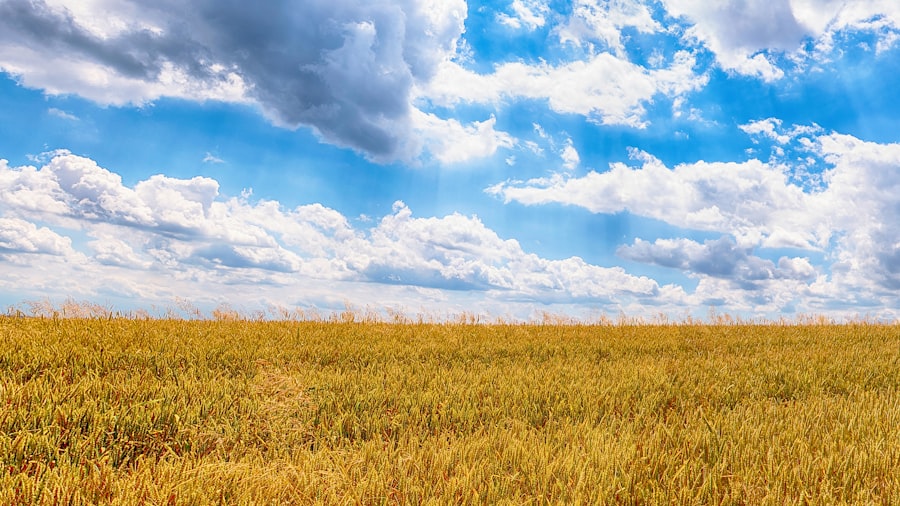Grass Lake, located in the picturesque state of Michigan, is known for its diverse and often unpredictable weather patterns. Nestled between the larger cities of Ann Arbor and Jackson, this small community experiences a climate that is influenced by both its geographical location and the Great Lakes. The weather in Grass Lake is characterized by four distinct seasons, each bringing its own unique characteristics and challenges.
Understanding the local climate is essential for residents and visitors alike, as it can significantly impact outdoor activities, agriculture, and daily life. The region’s weather is shaped by a combination of factors, including its proximity to Lake Michigan, which moderates temperatures and contributes to humidity levels. The lake effect can lead to significant variations in weather conditions, particularly during the winter months when cold air masses move over the relatively warmer waters.
This phenomenon can result in heavy snowfall and localized weather events that may not be experienced in surrounding areas. As such, Grass Lake serves as an interesting case study for those interested in meteorology and the complexities of regional weather systems.
Key Takeaways
- Grass Lake experiences a variety of weather patterns throughout the year, making it important to understand the seasonal changes.
- The temperature in Grass Lake can vary greatly, with hot summers and cold winters, so it’s important to be prepared for both extremes.
- Precipitation and rainfall are significant in Grass Lake, with the highest amounts typically occurring in the spring and summer months.
- Wind patterns in Grass Lake can be strong, especially during certain seasons, so it’s important to be aware of potential hazards.
- Grass Lake is prone to weather hazards and storms, including thunderstorms and tornadoes, so it’s important to stay informed and prepared.
Seasonal Weather Patterns
Spring: A Time of Renewal
Spring typically arrives in March and lasts until May, bringing a gradual warming trend after the cold winter months. During this time, temperatures begin to rise, and the landscape transforms as trees bud and flowers bloom. However, spring can also be unpredictable, with sudden temperature drops and late-season snowstorms not uncommon. The transition from winter to spring often features a mix of rain and sunshine, creating a vibrant tapestry of colors as nature awakens.
Summer: Warmth and Vibrancy
Summer in Grass Lake is characterized by warm temperatures and increased humidity. From June to August, residents can expect average highs in the 80s Fahrenheit, with occasional heatwaves pushing temperatures even higher. Thunderstorms are frequent during this season, often providing much-needed relief from the heat but also posing risks of severe weather. The lush greenery and vibrant flora during summer make it a popular time for outdoor activities such as hiking, fishing, and boating on Grass Lake itself.
Autumn and Winter: Contrasting Seasons
As summer fades into autumn, Grass Lake undergoes a stunning transformation. From September to November, temperatures gradually decline, and the foliage bursts into a riot of colors—reds, oranges, and yellows dominate the landscape. This season is often marked by crisp air and clear skies, making it an ideal time for outdoor festivals and harvest activities. However, autumn can also bring unpredictable weather patterns, including early frosts and occasional rain showers. The transition into winter begins in late November, setting the stage for the cold months ahead. Winter in Grass Lake is a defining feature of its climate. From December through February, residents brace for cold temperatures that often dip below freezing. Snowfall is common during this period, with the area receiving an average of 40 inches annually. The lake itself may freeze over, creating opportunities for ice fishing and other winter sports. While winter can be harsh, it also brings a unique beauty to the region as snow blankets the landscape. The stark contrast between the white snow and the dark trees creates a serene atmosphere that many residents cherish.
Temperature Variations

Temperature variations in Grass Lake are influenced by several factors, including seasonal changes and geographical features. The average annual temperature hovers around 50 degrees Fahrenheit, but this figure masks significant fluctuations throughout the year. During the summer months, temperatures can soar into the upper 80s or even low 90s, while winter temperatures frequently plunge into the teens or lower.
These extremes can create challenges for residents who must adapt their lifestyles to accommodate the changing climate. One notable aspect of temperature variation in Grass Lake is the diurnal temperature range—essentially the difference between daytime highs and nighttime lows. During summer months, it is not uncommon for daytime temperatures to reach 85 degrees Fahrenheit while nighttime lows drop to around 60 degrees.
This significant shift can affect everything from energy consumption to agricultural practices. Farmers must consider these variations when planning planting and harvesting schedules to ensure optimal crop yields. In contrast, winter nights can be particularly frigid, with temperatures sometimes falling below zero degrees Fahrenheit.
This drastic drop can lead to challenges such as frozen pipes and increased heating costs for homeowners. Additionally, the temperature variations can impact local wildlife behavior; animals may enter hibernation earlier or emerge later depending on how mild or severe the winter proves to be.
Precipitation and Rainfall
| Month | Precipitation (mm) | Rainfall (mm) |
|---|---|---|
| January | 50 | 40 |
| February | 45 | 35 |
| March | 60 | 50 |
| April | 70 | 55 |
| May | 80 | 60 |
Precipitation patterns in Grass Lake are characterized by a relatively even distribution throughout the year, although certain seasons tend to be wetter than others. On average, the area receives about 30 inches of precipitation annually, with rainfall being most common during late spring and summer months. Thunderstorms are particularly prevalent during this time, often bringing heavy downpours that can lead to localized flooding.
The spring months are crucial for replenishing groundwater supplies and supporting agricultural activities. Farmers rely on consistent rainfall during this period to ensure healthy crop growth. However, excessive rainfall can also pose challenges; fields may become waterlogged, delaying planting schedules or leading to crop damage.
The balance between adequate rainfall and excessive precipitation is a constant concern for those involved in agriculture in Grass Lake. Winter precipitation primarily falls as snow, contributing significantly to the region’s annual totals. The lake effect snow phenomenon can lead to particularly heavy snowfall in Grass Lake compared to areas further inland.
This results from cold air moving over the relatively warmer waters of Lake Michigan, picking up moisture that falls as snow when it reaches land. Residents often prepare for snowy conditions by investing in snow removal equipment and winter tires for their vehicles.
Wind Patterns
Wind patterns in Grass Lake are influenced by its geographical location and proximity to Lake Michigan. The area experiences prevailing winds from the west-northwest, which can bring both warm air during summer months and cold air during winter months. These winds play a significant role in shaping local weather conditions and can contribute to temperature fluctuations throughout the year.
During summer months, breezes from the lake can provide a welcome respite from heat, making outdoor activities more enjoyable. However, these winds can also lead to increased humidity levels as moisture is drawn from the lake into the surrounding areas. Conversely, winter winds can exacerbate cold temperatures by creating wind chill factors that make it feel even colder than it actually is.
Residents often find themselves bundling up against biting winds that sweep across open fields and frozen lakes.
Severe thunderstorms can be fueled by strong winds that create instability in the atmosphere.
These storms may bring heavy rain, hail, and even tornadoes on rare occasions. Understanding local wind patterns is essential for accurate weather forecasting and for residents to prepare adequately for potential severe weather events.
Weather Hazards and Storms

Grass Lake is not immune to various weather hazards that can pose risks to residents and infrastructure alike. Severe thunderstorms are among the most common hazards during the warmer months; these storms can produce damaging winds, hail, and flash flooding. The combination of high humidity and warm temperatures creates an environment conducive to storm development, leading to intense weather events that can disrupt daily life.
Tornadoes are another potential hazard in Grass Lake, although they are less frequent than thunderstorms. Tornadoes typically occur during late spring and early summer when atmospheric conditions are most favorable for their formation. While Grass Lake has experienced tornado warnings in the past, direct hits are relatively rare compared to other regions in Michigan known for tornado activity.
Winter storms present their own set of challenges for residents of Grass Lake. Heavy snowfall can lead to hazardous driving conditions and increased risks of accidents on icy roads. Snow accumulation may also cause power outages due to downed lines or tree branches collapsing under the weight of snow.
Residents must remain vigilant during winter months and stay informed about potential storm warnings issued by local meteorological services.
Weather Forecasting and Predictions
Accurate weather forecasting is crucial for residents of Grass Lake who need to plan their daily activities around changing weather conditions. Local meteorologists utilize advanced technology such as Doppler radar systems and satellite imagery to monitor atmospheric conditions in real-time. These tools allow forecasters to predict severe weather events with greater accuracy than ever before.
In addition to traditional forecasting methods, many residents rely on mobile apps and online platforms that provide up-to-date weather information at their fingertips. These resources often include hourly forecasts, radar maps showing precipitation patterns, and alerts for severe weather warnings. The accessibility of this information empowers individuals to make informed decisions about outdoor plans or travel arrangements based on current conditions.
Community engagement plays an essential role in weather preparedness as well; local organizations often host workshops or informational sessions on how to respond effectively during severe weather events. By fostering a culture of awareness around potential hazards like thunderstorms or winter storms, residents can better protect themselves and their property from adverse weather impacts.
Tips for Dressing and Packing for Grass Lake Weather
When preparing for a visit or daily life in Grass Lake, understanding how to dress appropriately for varying weather conditions is essential. Layering is key; given the region’s temperature fluctuations throughout the day—especially during spring and fall—dressing in layers allows individuals to adjust their clothing based on comfort levels as temperatures change. In summer months, lightweight clothing made from breathable fabrics is advisable due to high humidity levels; however, packing a light jacket or sweater is wise for cooler evenings when temperatures drop significantly after sunset.
Comfortable footwear suitable for outdoor activities is also recommended since many residents enjoy exploring local parks or lakeside trails during this season. During winter months, investing in high-quality outerwear becomes paramount; insulated jackets paired with thermal layers underneath provide warmth against frigid temperatures while remaining flexible enough for movement outdoors. Accessories such as hats, gloves, scarves, and waterproof boots are essential for protecting extremities from cold winds and snow accumulation.
Additionally, packing versatile clothing items that can be layered will help individuals adapt quickly to changing conditions throughout their stay in Grass Lake. Understanding Grass Lake’s unique weather patterns equips residents and visitors alike with valuable knowledge that enhances their experience in this charming Michigan community.
By being prepared for seasonal variations—from hot summers filled with thunderstorms to snowy winters—individuals can fully embrace all that Grass Lake has to offer while staying safe and comfortable throughout their time here.
If you’re interested in learning more about greenery and plants, you may want to check out this article on the top 10 houseplants for your home. These easy-care plants can bring a touch of nature indoors and brighten up any space. You can read more about it here.
FAQs
What is Grass Lake Weather?
Grass Lake weather refers to the current and forecasted atmospheric conditions in the area of Grass Lake, Michigan. This includes information on temperature, precipitation, wind, and other meteorological factors.
Where can I find Grass Lake Weather information?
Grass Lake Weather information can be found on various online platforms such as weather websites, mobile apps, and local news stations. The National Weather Service also provides detailed forecasts for the Grass Lake area.
What are the typical weather patterns in Grass Lake?
Grass Lake experiences a four-season climate, with warm summers, cold winters, and moderate spring and fall seasons. The area can also experience thunderstorms, snowstorms, and occasional severe weather events.
How accurate are Grass Lake Weather forecasts?
Weather forecasts for Grass Lake, like any other location, are based on the best available data and technology. While forecasts have become increasingly accurate, there is always a margin of error, especially for long-range predictions.
What should I do to prepare for Grass Lake Weather?
Residents and visitors in Grass Lake should stay informed about the weather forecast, especially during periods of potential severe weather. It’s important to have a plan in place for staying safe during extreme conditions, such as thunderstorms or snowstorms.
























+ There are no comments
Add yours